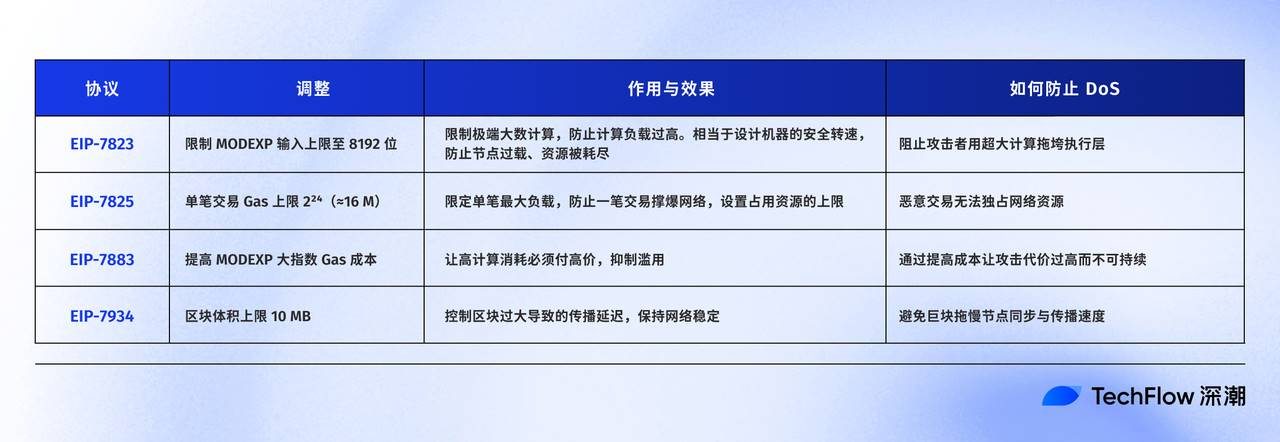The Most Understandable Guide to Fusaka: How Ethereum’s Next Upgrade Works and What It Means for the Ecosystem
After a sluggish performance last week, spot Ethereum ETFs are once again seeing net inflows, signaling a steady recovery in market sentiment. The next Ethereum upgrade is also on the way.
Historically, nearly every technical upgrade has acted as a catalyst for price movements, with post-upgrade improvements to on-chain performance directly influencing ETH’s valuation outlook.
This time, the Fusaka upgrade—arriving on December 3—delivers broader scope and deeper impact than ever before.

Fusaka isn’t just an efficiency upgrade; it’s a major overhaul of the entire Ethereum Mainnet. Gas costs, Layer 1 throughput, Layer 2 scalability, node requirements—nearly every key metric that defines the network’s health is making significant progress.
While past upgrades have made Ethereum “cheaper” or “faster,” Fusaka makes Ethereum more scalable and sustainable.
As protocol features grow more complex and demands on the base layer surge—especially with the emergence of AI Agents and high-frequency interactive DApps—this upgrade will directly shape Ethereum’s role in the upcoming wave of Web3 applications.
The following visual summary highlights the core changes in the Fusaka upgrade:

Next, we’ll break down the Fusaka upgrade’s core mechanics from both technical and practical perspectives.
This isn’t just a technical report for developers. We’ll explain the key changes in clear, accessible terms—even for non-technical readers. If you’re not interested in the mechanisms, feel free to skip ahead and see how this upgrade will impact the Ethereum ecosystem and your user experience.
Fusaka Upgrade Core: Scaling Further
The following technical advancements all serve a single purpose: enabling further scalability while maintaining security and decentralization.
PeerDAS: From Full Storage to Sampling Verification
Blobs are Ethereum’s new data blocks for storing large amounts of on-chain data. They package Layer 2 transactions into a “big box,” similar to a courier delivering a bulk shipment—efficiently uploading to the chain without using up permanent storage.
Prior to Fusaka, every node had to fully store and validate all the data—like a courier company keeping every package—which led to overloaded storage, bandwidth bottlenecks, and rapidly rising node costs.
PeerDAS offers a smarter solution: instead of full storage, it uses network-wide sharding and sampling.
- Storage: Each blob is split into eight pieces. Each node randomly stores just 1/8, while other nodes handle the rest.
- Verification: Random sampling validation makes errors as rare as 1 in 10^20 to 1 in 10^24. If nodes are missing fragments, they can quickly reconstruct the data using erasure codes.
This simple concept represents a significant advancement in data availability. In practice, it means:
- Node workload drops by 8x;
- Network bandwidth pressure plummets;
- Storage shifts from centralized to distributed, further enhancing security.
Blob Pricing Mechanism
Blobs, introduced in the Dencun upgrade, allowed rollups to upload data at lower costs, with fees dynamically adjusted by the system based on demand. But this setup revealed some limitations:
- When demand dropped sharply, fees almost fell to zero, failing to reflect actual resource usage.
- When demand spiked, blob fees soared instantly, causing rollup costs and block delays to jump.
These sharp swings happen because the protocol adjusts prices only according to short-term usage, without a complete sense of the underlying price structure.
EIP-7918 in Fusaka fixes this volatility. Its core idea is to prevent blob fees from swinging wildly, instead keeping them within a reasonable range.
This adds a floor to the pricing model:
- If prices drop below execution costs, the algorithm applies a brake, preventing near-zero fees;
- During heavy demand, it slows price increases, keeping costs from spiking uncontrollably.
EIP-7892, another key proposal, makes Ethereum more Layer 2-friendly. It lets the network fine-tune blob capacity, count, and size dynamically—no more hard forks for every parameter change.
When Layer 2s need more throughput or lower latency, the Ethereum Mainnet can respond instantly, greatly improving system flexibility and scaling potential.
Security and Usability
Security
Scaling allows Ethereum to process more transactions, but it also increases the attack surface. Denial-of-Service (DoS) attacks can clog the network, delay transactions, or even knock nodes offline, damaging both user experience and security.
Ethereum already features strong DoS protections. These upgrades add new layers of defense—not patching flaws, but reinforcing an already robust security framework.

Think of Ethereum as a highway: Fusaka’s four EIPs are like managing speed limits (EIP-7823), vehicle weight (EIP-7825), tolls (EIP-7883), and vehicle length (EIP-7934)—together controlling computational load, transaction volume, operational costs, and block size. This ensures that, even as traffic grows, all vehicles move smoothly and quickly. Ethereum scales up while staying stable, efficient, and attack-resistant.
Usability

For users, using the highway analogy again: pre-confirmation means reserving your spot at the entrance and locking in your exit time before even entering. Block confirmations are nearly instant.
For developers, Fusaka improves the execution environment: faster smart contract processing, lower costs for complex operations, plus support for hardware keys, fingerprint authentication, and mobile login—streamlining both account management and user interaction.
Practical Impact
Setting aside the technical details, what does this mean for user experience and the broader ecosystem? The graphic below tells the story:

Here’s a closer look at the most important aspects:
Staking: Safer and More Stable
Previously, running an Ethereum validator was like a pro sport: expensive hardware, complex operations, and days-long data syncs kept ordinary users away. Fusaka is changing that permanently.
With PeerDAS, nodes validating blob data now sample and store just 1/8 of the data, slashing bandwidth and storage requirements. As a result,
Before Fusaka, Ethereum.org’s official blog noted that a 32 ETH validator could run on just 8 GB of RAM. Fusaka goes further, reducing bandwidth and storage even more. For example:
- On the Fusaka testnet, running a validator node requires about 25 Mb/s bandwidth.
That’s a modest requirement. After Fusaka, with a stable connection, many home devices can run Ethereum validator nodes and earn staking rewards.
Fusaka makes home-based nodes a reality. No longer just for professional operators, everyday devices can help secure Ethereum—and share in staking rewards.
This exemplifies true decentralization. Lowering the barrier brings more independent validators, making Ethereum stronger, more resilient, and more decentralized.
For investors, this also improves staking risk: with validator nodes less concentrated among large operators, the network stays stable under heavy load, volatility falls, and the yield curve smooths out.
High-Frequency Interactions: Fusaka Ushers in Real-Time Ethereum
In Web3, DeFi, payments, and AI Agents all have one bottleneck: they need real-time responsiveness.
Previously, Ethereum was secure but not smooth. A 12-second block time is fine for big, single transfers, but for AI Agents issuing rapid commands or on-chain payments requiring millisecond settlements, it’s too slow.
Fusaka fundamentally changes the landscape.
With PeerDAS, higher gas limits, and lower Layer 2 costs, Ethereum can now support high-frequency, interactive apps.
The Ethereum ecosystem could be on the verge of becoming much more dynamic and real-time.
Take DeFi as an example:
Fusaka not only boosts throughput, but it also directly improves the DeFi user experience. Lending, synthetic assets, and high-frequency trading protocols now “run faster and cost less.”
Consider these protocol examples:
- Aave: Loan liquidation windows shrink and costs drop, thanks to lower Layer 2 upload costs. Liquidations bundle faster, reducing slippage and latency risk.
- Synthetix: Synthetic asset settlements are faster and contract interaction fees fall. Larger blobs mean large contract calls are no longer limited, making capital more efficient.
- High-frequency DEXs: Liquidity pools deepen, and large trades no longer cause major slippage. This is driven by higher block gas limits and lower Layer 2 upload costs, boosting liquidity utilization.
Conclusion
The Fusaka upgrade could be Ethereum’s most transformative since the Merge and Dencun, unlocking tremendous ecosystem potential.
With 8x on-chain data capacity, lower transaction fees, multiple-times throughput increases, and lower validator entry barriers, Fusaka will energize the Ethereum ecosystem for the next era.
It is important to monitor whether Fusaka will trigger a new growth cycle for Ethereum.
Disclaimer:
- This article is republished from [TechFlow]. Copyright belongs to the original author [TechFlow]. For republication concerns, contact the Gate Learn team to resolve the issue promptly.
- Disclaimer: The views and opinions in this article are the author’s own and do not constitute investment advice.
- The Gate Learn team translated other language versions of this article. Unless otherwise specified by Gate, copying, distributing, or plagiarizing the translated content is prohibited.
Related Articles

What Is Ethereum 2.0? Understanding The Merge

Reflections on Ethereum Governance Following the 3074 Saga

What is Neiro? All You Need to Know About NEIROETH in 2025

Our Across Thesis

An Introduction to ERC-20 Tokens
